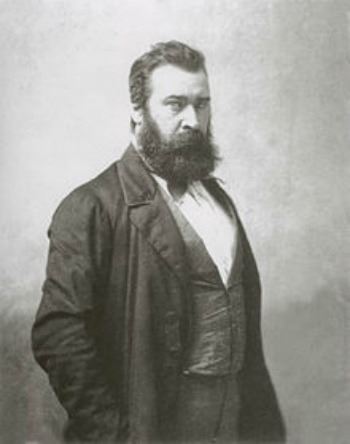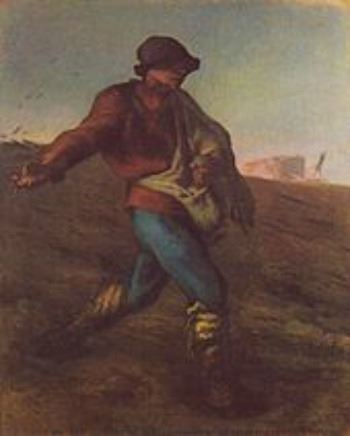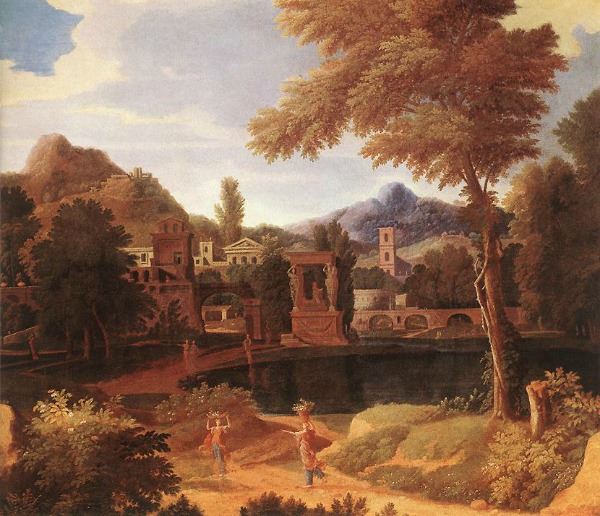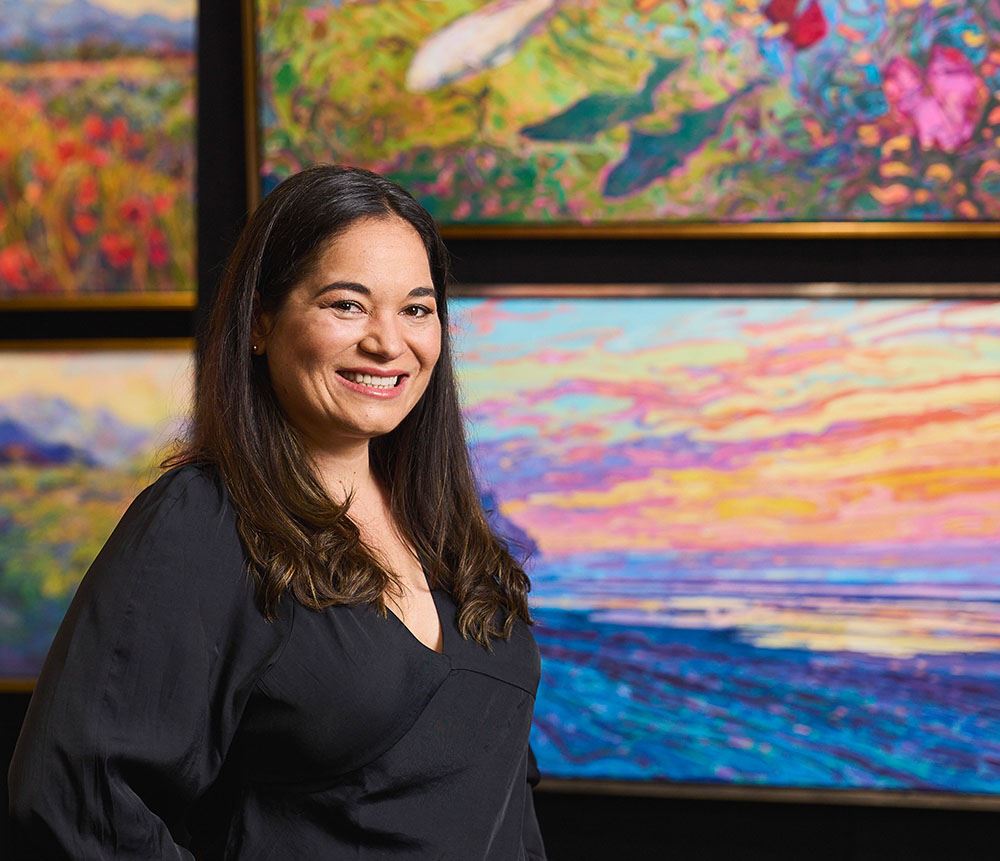
Code NEWYEAR applied for 20% off!

Subtotal
$0
U.S. Shipping
FREE
Saved for Later
Shopping Cart

Code NEWYEAR applied for 20% off!

Subtotal
$0
U.S. Shipping
FREE
Saved for Later

French Impressionism, a 19th century style of painting, was the forerunner and inspiration of American Impressionism, eventually evolving into today's Impressionist style. A natural evolution, considering the stunning landscapes prevalent throughout the United States. The summer weather in California and many National Parks encourages painting outside, so no small wonder Impressionism made the jump to the US, and it's popularity continues to this day.
While many people are familiar with Impressionism, we pay homage today to a particular figure from the mid-19th century, who influenced French painting towards landscapes and eventually Impressionism: Jean-Francois Millet (1814 - 1875).
Jean-Francois Millet was best known for capturing the rural life of French peasants. His best works include The Sower (1850, Museum of Fine Arts, Boston), The Angeles (1858, Musee d’Orsay), Man with a Hoe (1860, J Paul Getty Museum, L.A.) and The Gleaners (1857, Musee d’Orsay). His style of painting was Naturalism and Realism. Millet was also a founding member of the France-based Barbizon Landscape school.
 Barbizon helped develop plein-air landscape painting, greatly influencing Europe and the United States, and eventually resulting in the Impressionism Movement. The age of Impressionism included artists such as Eugene Boudin, Claude Monet, Alfred Sisley and Pierre-Auguste Renoir. Notably, in 1886, Vincent van Gogh became infatuated with French Impressionism and became known as a Post-Impressionist. Millet was an early influence for van Gogh, who eventually copied some of Millet’s works and mentioned Millet many times in correspondence to van Gogh’s brother, Theo.
Barbizon helped develop plein-air landscape painting, greatly influencing Europe and the United States, and eventually resulting in the Impressionism Movement. The age of Impressionism included artists such as Eugene Boudin, Claude Monet, Alfred Sisley and Pierre-Auguste Renoir. Notably, in 1886, Vincent van Gogh became infatuated with French Impressionism and became known as a Post-Impressionist. Millet was an early influence for van Gogh, who eventually copied some of Millet’s works and mentioned Millet many times in correspondence to van Gogh’s brother, Theo.
"The peasant there is different from the inhabitant of Millet’s wide wheat fields. But Millet has reawakened our thoughts so that we can see the dweller in nature. But until now no one has painted the real Southern Frenchman for us." [Source: vggallery.com]
Photo Credit: The Sower, Nadar
[Public domain], via Wikimedia Commons
Photo Credit: The Gleaners, Jean-François Millet [Public domain], via Wikimedia Commons
The Gleaners is typical of Millet's subjects. "Gleaning" refers to a practice of allowing peasants to "glean" the remaining grain from the ground after a harvest.
Claude Monet's paintings of the coast ofNormandy were also influenced by Millet's late landscapes.
Present day Impressionist landscape painters continue the evolution of French Impressionism, carrying the torch lit by artists such as Millet and van Gogh. Capturing the essence of a landscape, revealing the beauty and wonder of Mother Nature, the work of the artist, was perhaps best described by Van Gogh himself:
"To try to understand the real significance of what the great artists, the serious masters, tell us in their masterpieces, that leads to God; one man wrote or told it in a book; another in a picture.” [Source: vangoghmuseum.nl]

Imaginary Landscape by Jean-Francois Millet [Public domain], via Wikimedia Commons
Discover the artist at the forefront of modern impressionism.

About Erin
ERIN HANSON has been painting in oils since she was 8 years old. As a teenager, she apprenticed at a mural studio where she worked on 40-foot-long paintings while selling art commissions on the side. After being told it was too hard to make a living as an artist, she got her degree in Bioengineering from UC Berkeley. Afterward, Erin became a rock climber at Red Rock Canyon, Nevada. Inspired by the colorful scenery she was climbing, she decided to return to her love of painting and create one new painting every week.
She has stuck to that decision, becoming one of the most prolific artists in history, with over 3,000 oil paintings sold to eager collectors. Erin Hanson’s style is known as "Open Impressionism" and is taught in art schools worldwide. With millions of followers, Hanson has become an iconic, driving force in the rebirth of impressionism, inspiring thousands of other artists to pick up the brush.